This new series of features will look at what drives a collector to collect and how they go about seeking out items they want for their collections. Here we look back through time to highlight the greatest horological collectors and showcase their particular area and passion for collecting.
“To carry a fine Breguet watch is to feel that you have the brains of a genius in your pocket.”
Sir David Lionel Salomons
Sir David Lionel Salomons (1851–1925), the nephew of the original Sir David Salomons (1797–1873), was a renowned collector of Breguet watches and a significant figure in the world of horology. His passion for precision engineering, combined with his wealth and scholarly interest, made him one of the most prominent collectors of Abraham-Louis Breguet’s masterpieces.
The Salomons were a highly respected family in 18th century London society. The family had arrived and settled in Bury St in the City of London from the Netherlands in the early 18th century, attracted by the financial opportunities in the developing British economy. They chose this part of the city because it was both a centre of the finance industry and had an established Jewish community.
David Lionel’s Uncle was elected as the Lord Mayor of London in 1855 (below). He was the first Jewish Lord Mayor of London, and known for fighting the Jewish cause in Parliament, but he was also a pioneer of joint stock banking and held prominent positions in other fields.
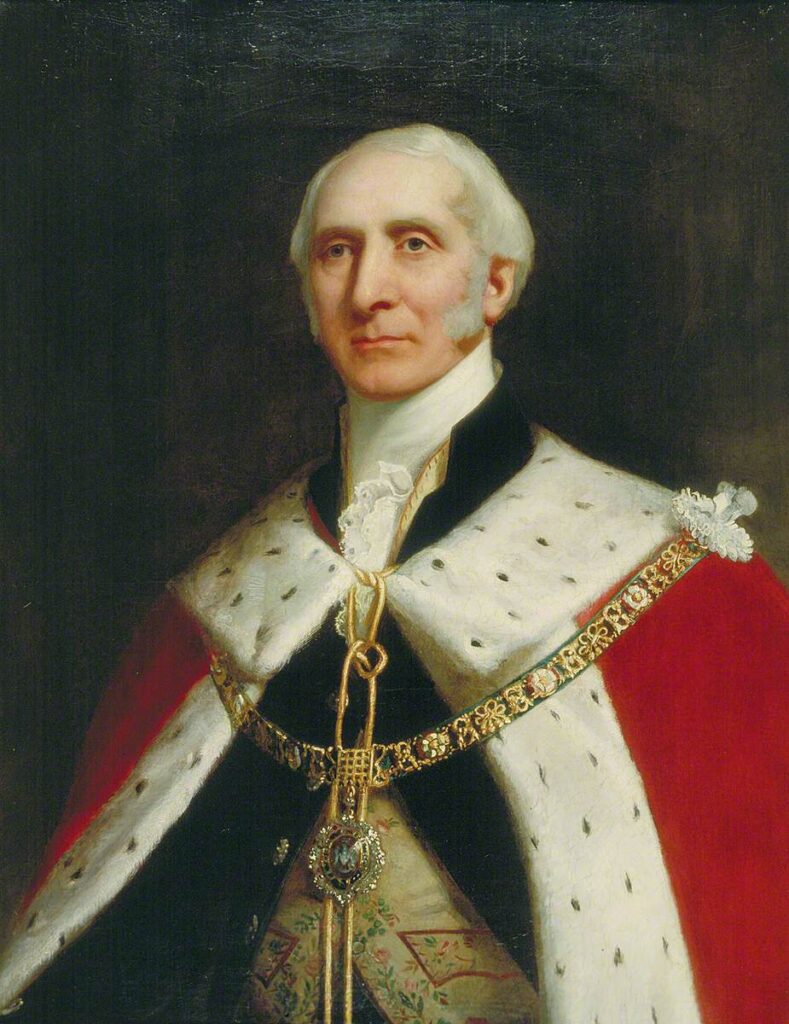
Early Life
David Lionel Salomons, was born in Brighton. He was educated for a short period at University College, London, and afterwards at Caius College, Cambridge, where he graduated with natural science honours in 1874.
He was a member of the Institution of Electrical Engineers, where he took a leading part for many years on the Council and served in the positions of honorary treasurer and vice-president. He was a fellow of the Royal Astronomical Society, of the Physical Society of London, and of the Royal Microscopical Society, and an associate of the Institution of Civil Engineers.
In 1873 he succeeded to the title of his uncle, Sir David Salomons, by special remainder (dated 1869) and inherited the Broomhill estate near Tunbridge Wells (below). Sir David Lionel was one of the first in England to adopt the electric light. This was in 1874, when he found it necessary to make the lamps, switches and other apparatus himself, as those were unobtainable at the time.
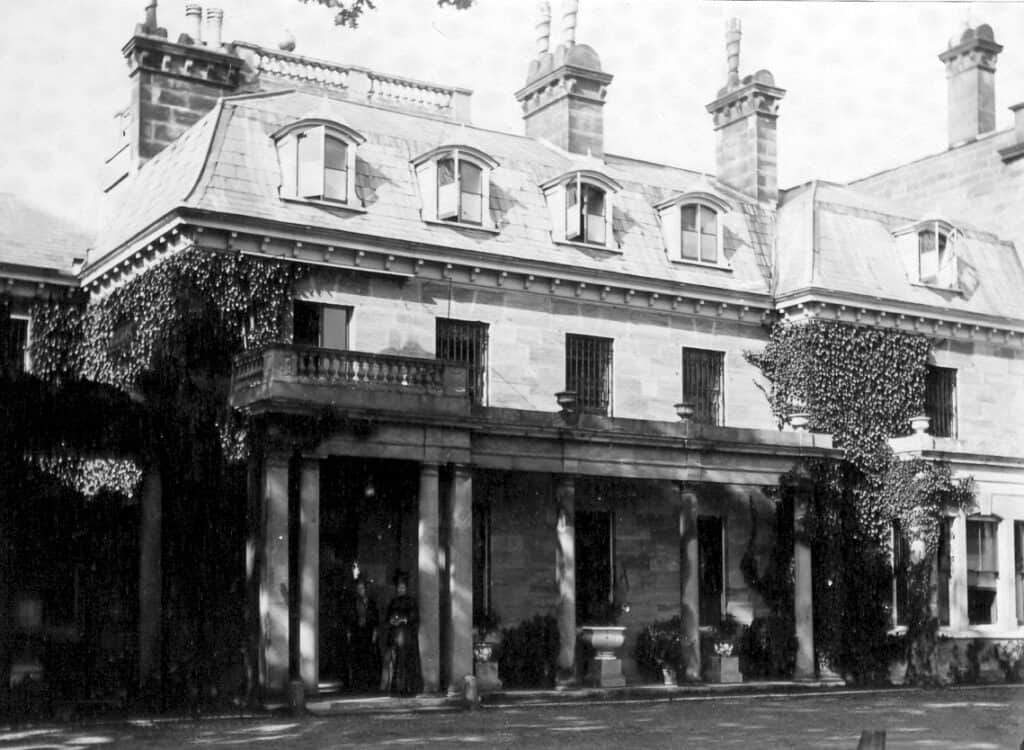
Salomons was an early pioneer for the car on British roads (below). In 1875 he constructed a small electrical road carriage, which was in use a short time only, owing to the trouble of re-charging batteries, as no accumulators existed at that period (Seemingly not much has changed on that front!)
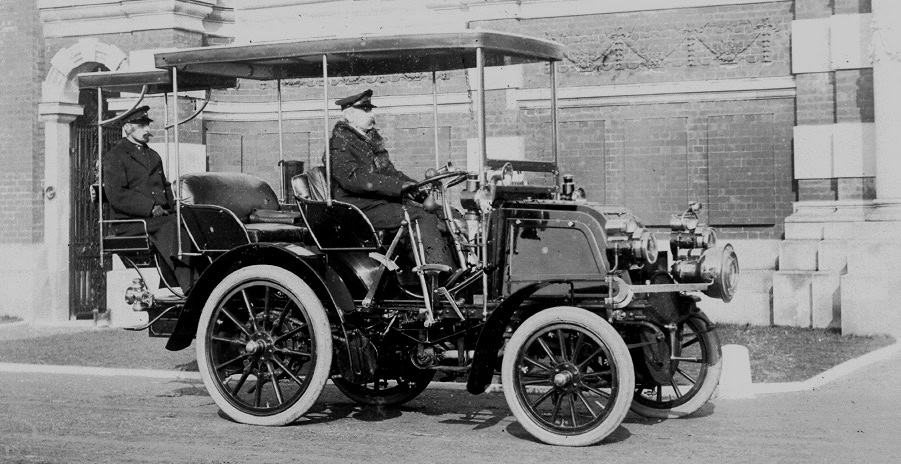
It was at an early age that he developed a fascination for watches: making and mending them. Many years later he started collecting them, focusing on the work of the iconic Swiss watchmaker Abraham-Louis Breguet.
His collection eventually numbered more than 120 watches made by Breguet with its centrepiece being the extraordinary ‘Marie Antoinette’ watch (No.160), commissioned as a gift for her but not completed until many years after her death in 1820.
Salomons writes that he passed a shop near London’s Regent Street on a “pouring wet day” in May of 1917. He goes on to say that his attention was attracted by a “curious-looking watch” differing from the usual display, with a notice by its side bearing the name of the ill-fated Queen of France. He didn’t purchase it straightaway as it was a “high price” (estimated in excess of £600 – today equating to £35,000 – as the last known sales figure when the last of the Breguet’s in business died, the watch was passed to the widow, Madame Breguet who sold it in 1887 to Sir Spencer Brunton for that amount), but on his way home to his Grosvenor Street house he was calculating whether he could afford it. Having convinced himself that once the rain had ceased it wouldn’t be long before someone else bought it, he put on his waterproofs and went back to the shop.
It was evident that the owner had made a special study of Breguet’s work and was selling the watch on commission. Although Salomons principle wasn’t to make “offers” he knew that given the circumstances, he was free to offer the price he proposed. He examined the timepiece and realised that this was Breguet’s Masterpiece and thought it was perfect. He asked the shopkeeper to inform him by 10am the next day if he was successful. At 9.30am the vendor arrived with the watch and said that if he was able to increase his offer by £50 (another £3,000 in today’s money), then the watch would be his. Salomons agreed and gave him a cheque and kept the watch.
There has been much written about this extraordinary timepiece, but it is Salomons who really brings to life the true mysterious back-story of how the watch came to be. The ‘Notice’ states that the watch was ordered in 1783 by an officer in the Marie-Antoinette Guards, with the condition that every complication then known or possible should be put in it, no brass used but gold instead, no limit of time to complete, no limit as to price. One wonders whether the officer was certainly an admirer of the Queen, but was he, her lover. It also appears that he had a good knowledge of horology, how intriguing!
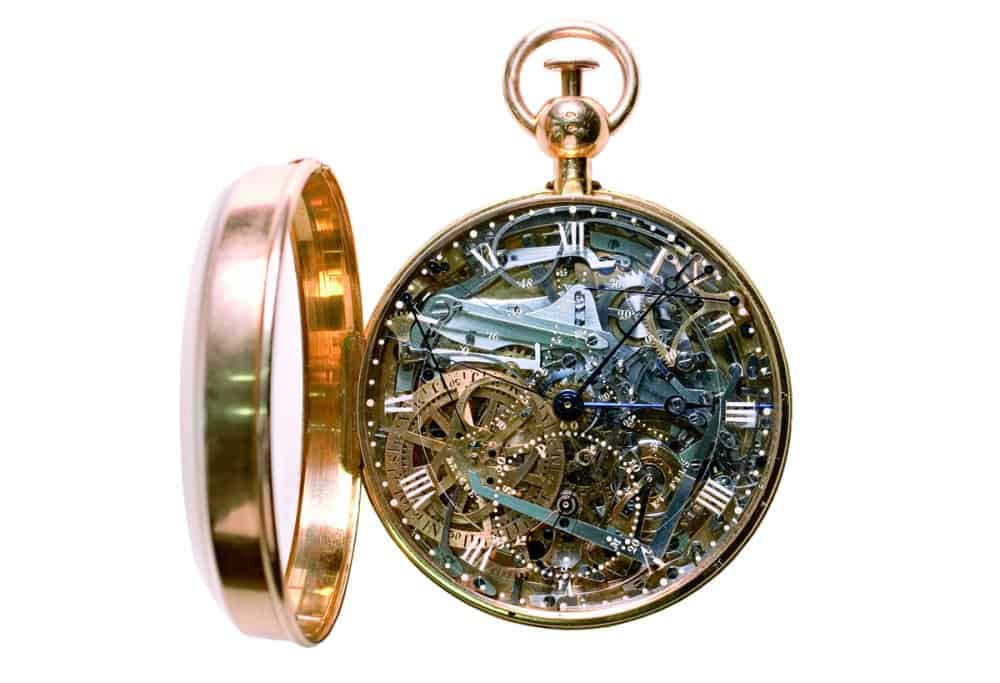
I believe that the above really does sum up the way a collector thinks and behaves. Collecting can become an obsession and once you have seen something you want, you generally spend time working out how you can achieve adding it to your collection and ultimately justifying your purchase. However, given that the watch is estimated to be worth upwards of $100,000,000 today, then one could argue that this was a shrewd investment. It also inspired him to spend the rest of his life studying Breguet’s work.
In 1983, the watch was stolen from the L.A. Mayer Museum for Islamic Art in Jerusalem, along with many other pieces from Salomons’ collection. The robbery remained unsolved for over two decades, but the watch was miraculously recovered in 2007. After careful restoration, it was returned to the museum, where it remains on show today.
The “Marie Antoinette” watch represents more than horological mastery—it symbolises the intersection of art, science, and history. Its journey through royal courts, collectors’ vaults, a dramatic theft, and its eventual recovery adds layers of intrigue to its already storied legacy.
Other Highlights from The Collection
In 1921 Salomons published a 230-page study of Breguet, titled Breguet 1747-1823. It was the first seminal work on one of the most important horologists of all time. He states in the introduction that “Breguet is known only by his productions. He never published a single sentence.” I believe that Salomons wanted to be the ‘voice’ of Breguet and to tell the amazing story of the watch and clockmaking business that was one of the most successful of the 18th and 19th centuries. He goes on to say that the reason for the absence of such a reference book was the high prices, scarcity of the items and that few people, even most watchmakers, don’t understand his best work.
He was generous in lending his collection to institutions across the world. In 1923 he loaned his collection to the Musée Galliera in Paris for a centenary exhibition. Salomons’ Breguet collection was among the most comprehensive of its time. This made it one of the largest private collections dedicated to the legendary Swiss watchmaker. The collection included:
- Pocket Watches: Featuring intricate complications such as perpetual calendars, minute repeaters, and chronographs.
- Marine Chronometers: Reflecting Breguet’s contribution to nautical navigation.
- Clocks and Automata: Showcasing advanced mechanical designs.
- Wristwatches: Though relatively few, these exemplified early designs as wristwatches were uncommon during Breguet’s era.
Other Highlights from His Collection Include the Following Timepieces
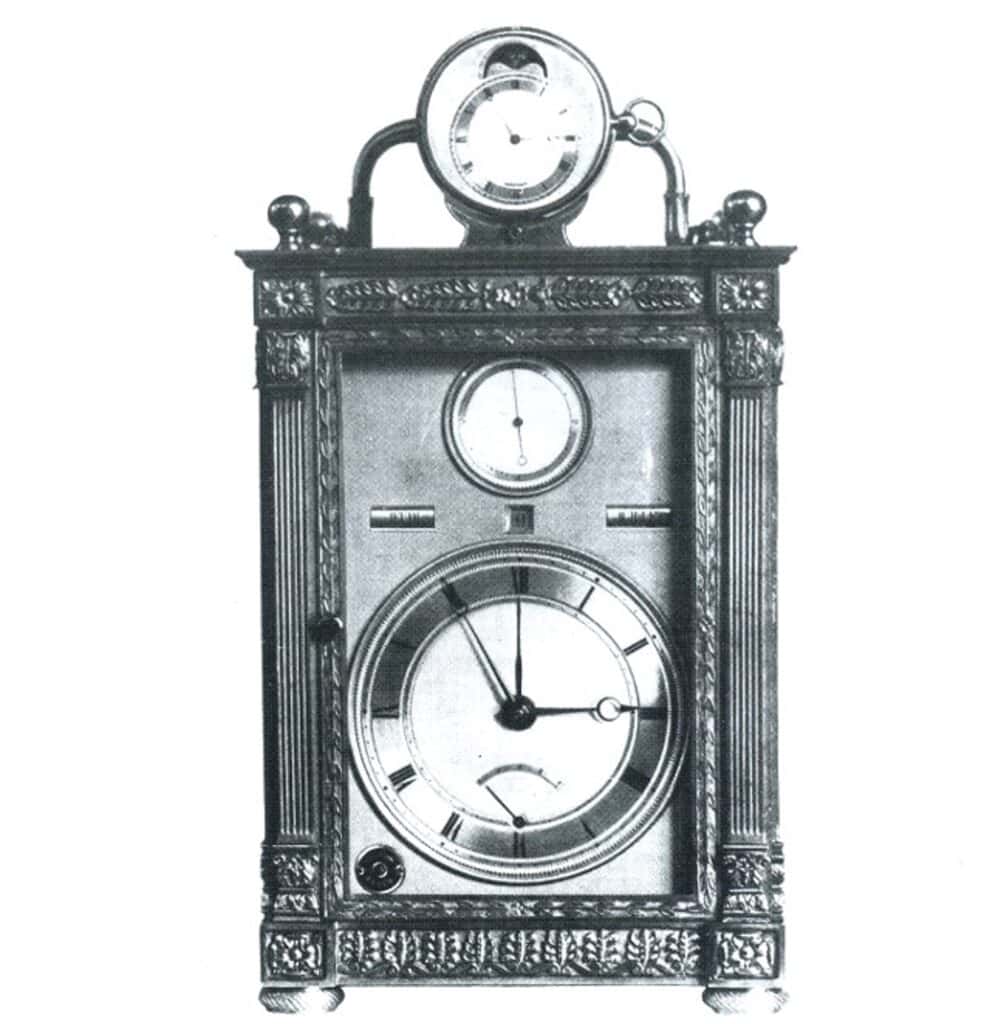
Conceived by Breguet in 1795 and presented to the public for the first time at the national exhibition of 1798, the sympathique clock was a system comprising a clock and watch. The clock was designed to hold the watch which, when placed in a recess, was automatically adjusted and reset. The term ‘sympathique’ was chosen by Breguet to express the notion of harmony and concord, ‘sympathy’ being used in its mystical sense to signify the universal principle that unites in harmonious accord the organs of the human body. Abraham-Louis sold only five examples, all different, before his death in 1823, and Antoine-Louis only one, in 1830. All were bought by kings or princes. Salomons’ Pendule Sympathique Clock made by Rabi with watch no. 722 made by Breguet was originally sold to a ‘person unknown’ in about 1812 for 25,000 francs.
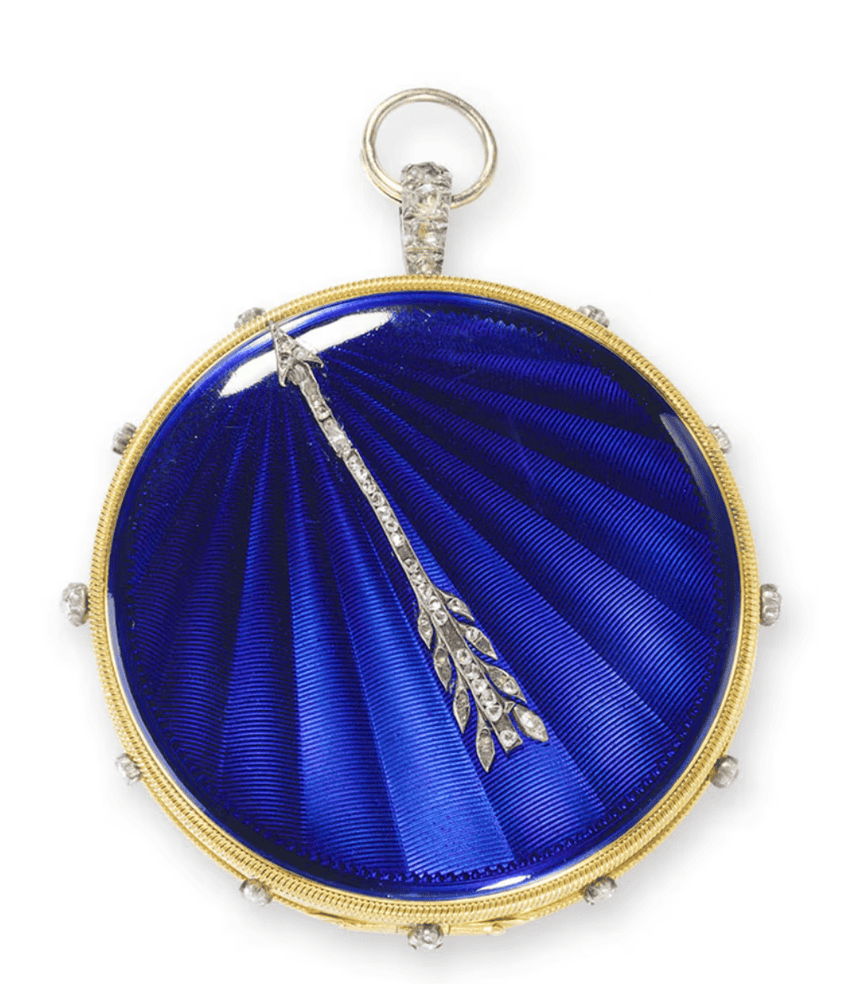
This watch can be read by touch, hence why it is referred to as a ‘tact’ watch. An arrow on the outside of the case reproduces the position of the hour hand. After ‘feeling’ the position of the arrow, the wearer can find their bearings thanks to markers located directly above the hours. Available for purchase starting in 1799, the touch (à tact) watch – known as the ‘watch for the blind’ – lent itself to a great wealth and variety of embellishment, including enamel, pearls, and diamonds. With a few exceptions, the touch system was confined for obvious reasons to simple, non-striking watches. The watch owned by Salomons was sold to Lucien Bonaparte (the younger brother of Napoleon) in 1801 and was watch no. 852.
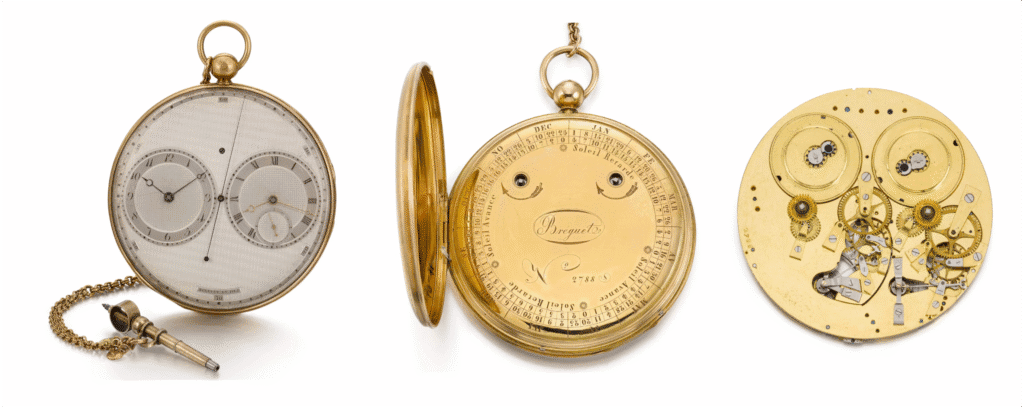
This watch was sold to the Prince Regent (later King George IV), on the 2nd of October 1818 for 7,200 francs. Salomons describes it as having a gold case, engine turned, inner dome gold engraved with equation of time, silver dial, two dials showing both mean time, one dial with gold hands, central seconds driven by the works, which dial has steel hands, and this second’s hand is steel, anchor escapements, compensated balances, ruby and sapphire holes, elastic suspensions. He goes on to say that it has “two complete works in one case”, stating that one balance can be approached or receded from the other. It was believed that two balances vibrating close together would correct the errors in each and beat in unison.
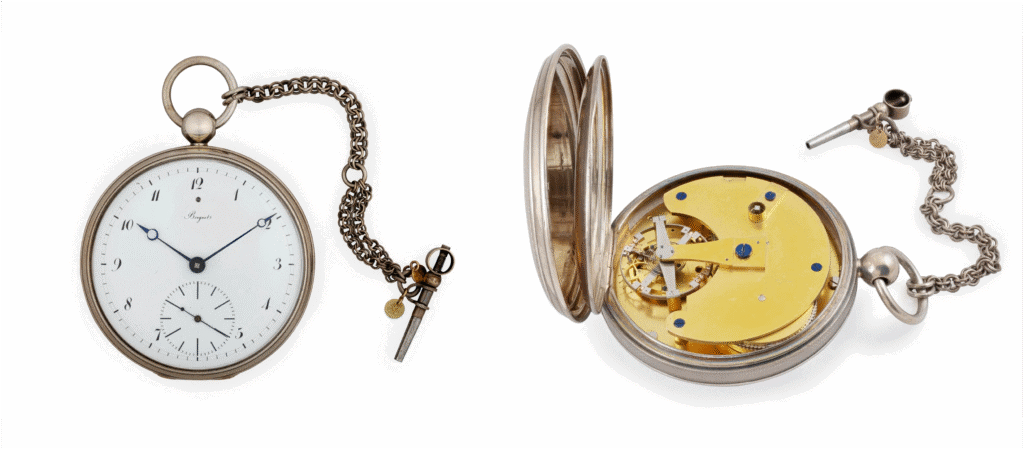
Salomons collection included several examples of Breguet Tourbillon watches. This silver cased, lever escapement one-minute tourbillon has an engraved crown covered with clear grey enamel in the centre and silver chain and key attached. The cuvette is signed ‘Breguet et Fils. Regulateur à Tourbillon no. 2571’. It has a white enamel dial with arabic hour figures and a subsidiary second’s dial. Blued steel ‘Breguet’ hands. Dial signed ‘Breguet’ in cursive script, with a secret signature underneath. It was originally bought from Breguet by the Princess de Valençay in 1812 for 1,600 francs. The Princess de Valençay is associated with the House of Talleyrand-Périgord, one of the most influential families in French and European history.
Today the tourbillon remains one of the most coveted ‘complications’ by collectors and continues to capture the mystique and fascination of its invention by Breguet over 220-years ago.
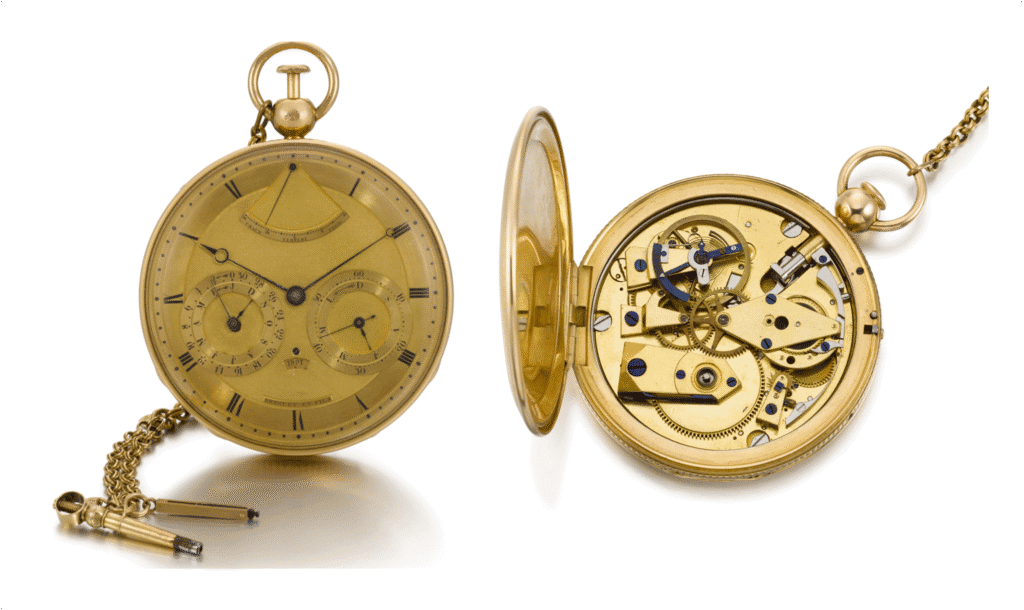
No collection would be complete without a repeater watch. This fine example, Breguet watch no. 1806, was sold to the Princess Murat, Caroline Bonaparte (younger sister of Napoleon), on the 25th of March 1807 for 4,000 francs. The gilded movement has a ruby cylinder escapement, plain three-arm brass balance, parachute suspension, spiral spring with regulator and compensation curb and repeats on a single gong. The exquisite gold dial has a satin-finished chapter ring, Roman numerals, subsidiary dials to the right for seconds combined with inner circle for days of the week and to the left for date of the month with inner circle for month of the year, the day, date and month each with arrow indicating their counter-clockwise progression, aperture between subsidiaries for year indication, sector above for thermometer, blued steel hands with jumping hour hand.
After Salomons death in 1925, his daughter Vera inherited the watches. She sold several pieces at Christie’s in 1964-5, and later bequeathed the core of the collection to the L.A. Mayer Museum for Islamic Art in Jerusalem where the collection resides today.
Salomons’ dedication to collecting helped enhance Breguet’s reputation as an important figure of modern watchmaking. His extensive collection provided valuable insights into the technological and artistic innovations of the 18th and 19th centuries. By seeking out, curating and studying these timepieces, Salomons bridged the gap between Breguet’s era and modern horology, ensuring that Breguet’s legacy inspired others including the greatly revered watchmaker, George Daniels.
Today, many modern watch collectors often cite Salomons as a key figure who elevated watch collecting into an art and science. Through his generosity in donating his collection to a public institution, he ensured that future generations could appreciate the artistry and technical mastery of Breguet. His book and collection remain a benchmark in horology, influencing collectors, scholars, and watchmakers to this day. Long may it continue.
Hero Image: Sir David Lionel Goldsmid-Stern-Salomons, (1851–1925) 2nd Bt by Bassano Ltd, c.1909. © National Portrait Gallery, London
The next in the series The Greatest Collectors of All Time is now available on Worn & Wound.


